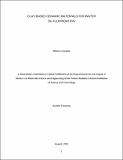| dc.description.abstract | Long-term consumption of water with fluoride concentration above the WHO recommended
limit of 1.5 mg/g may cause fluorosis. Low-income communities living in fluoride endemic
regions are more affected as they cannot afford well-established water de-fluoridation
technologies. Currently, clay ceramic materials impregnated with silver colloids have been
used to disinfect water disregarding the removal of fluoride. This work investigated improving
the de-fluoridation capacity of clay ceramic materials with in-situ generated Ca/Mg phosphate
system using locally available carbonate rocks as a source of Ca/Mg. To achieve this, clayCa/Mg
phosphate
system
composite
ceramic
materials
were
synthesized
from
varied
ratios
of
clay
(K)
to
carbonate
rock
materials
(R)
(K:R
=
0:100,
90∶10,
85∶15,
75∶25
and
100:0),
sintered
at various temperatures between 500 and 900 . The materials were characterized using
XRF, FTIR, AAS, CHNS-O analyzer and X-ray PDF analysis. The three types of carbonate
rock materials investigated were identified to be; high-calcium limestone, magnesium-deficient
dolomite and near-stoichiometric dolomite. The magnesium-deficient dolomite gave rise to a
Ca/Mg phosphate system that exhibited superior de-fluoridation performance. The material
improved in de-fluoridation performance with increase sintering temperature from 500 to
700 , possibly due to an increase in the more soluble magnesium-substituted tri-calcium
phosphate (β-Mg
x
Ca
3-x
PO
4
), CaO and MgO (PDF and FTIR). This work has shown that the
de-fluorination performance of clay ceramic materials can be improved with a phosphate
system synthesized/formed in-situ using carbonate rocks as Ca/Mg source. The method of
improving the de-fluoridation performance of clay ceramic materials introduced in this present
study has potential applications in the fabrication of water filters with fluoride removal ability. | en_US |


